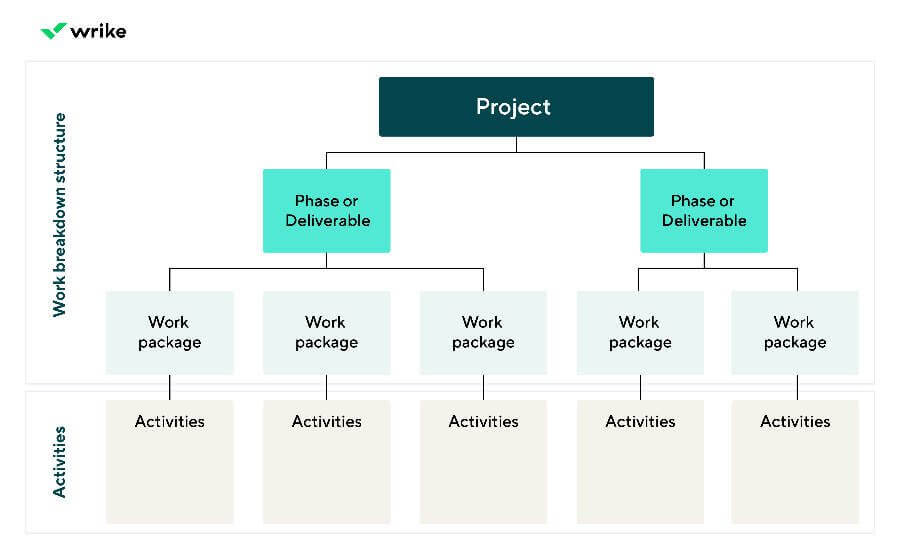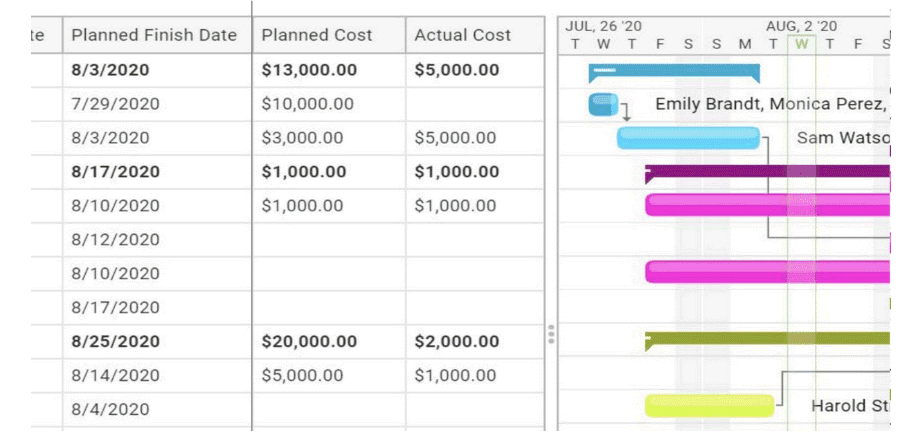How to Design a Work Breakdown Structure?
A work breakdown structure (WBS) is a deliverable-oriented hierarchal arrangement of tasks that organises the full scope of the project for easy visualisation.
This makes it easier to see what needs to be done and how much work you will need to complete to meet the desired final goal.
The WBS can be used at any project stage, from the initial planning and brainstorming to post-completion analysis. A WBS will help plan and prioritise the work needed to complete a project.
The progress of a software project relies on a successful work breakdown arrangement and its compatibility with the method system. Although the principle and practice of using a WBS are well known, the published literature largely avoids this subject.
This is because the development of a job breakdown system is influenced by project management style, corporate philosophy, client preferences, financial limitations, and various other difficult-to-define project-specific criteria. Context information on machine-oriented job breakdown systems can be found in Software Engineering Economics.
Product subsystems, modules, functions, organisational units, life-cycle periods, and even geography may affect work decomposition into discrete tasks. The majority of structures have a subsystem-level decomposition. Subsystems are then broken down into their constituent parts, one of which is usually the software. This section focuses on software WBS components if the programme is the whole project or only one part of a broader scheme.
The organisational map of a job breakdown system details all of a project’s phases, making it an important project management method for organising and scheduling. The final deliverable sits above the map, while the stages below it separate the project scope by indicating the steps, deliverables, and activities required to achieve it.

Project managers use project management tools to plan and perform a task breakdown structure. Project management tools can be handy for organising, arranging, and executing tasks combined with a Gantt map that implements WBS hierarchies.
Levels in a Work Break Down Structure
In project management, a work breakdown structure (WBS) breaks down big, complicated tasks into smaller, more manageable chunks to make them easy to prepare, schedule, and execute. Tiers of project deliverables and tasks are developed to aid in preparing, implementing, and monitoring projects. There are four main levels of a WBS, which are outlined below:
- The Top Level: Project title or Final Deliverable.
- Controls Account: Main phases and deliverables.
- Work Packages: The group of tasks that lead to the controls account level.
- Activities: The tasks needed to complete the work package.
Types of Work Break Down Structure
There are two types of job breakdown structures: deliverable-based and phase-based. A deliverable-based WBS defines the project’s deliverables and scale. At the same time, a phase-based WBS shows the final deliverable on top, with the five stages of a project shown below (initiation, planning, execution, control, and closeout).
Clearly, a work breakup structure is a versatile instrument. A plain numbered list (also known as an outline view), a straightforward tree diagram, or even a Gantt map may all be used. When a Gantt map is part of a broader project management tool, the Work Breakdown Structure (WBS) can be used to schedule, delegate, report, and document the team’s progress.
Some Common Types of Work Breakdown Structure are:
Verb-oriented WBS: It defines the deliverables in terms of actions.
Noun-oriented WBS: It defines work in terms of components
Time-phased WBS: It breaks the project into phases for long-term projects.
Why use a Work Breakdown Structure?
WBS is usually made by the project team by figuring out what the most important functional deliverables are and then breaking them down into smaller systems and sub-deliverables. WBS development is usually based on the project management style, the organization’s culture, customer preferences, financial constraints, and several other factors that are hard to define and specific to each project. In WBS, bigger tasks are broken down into smaller pieces that are easier to handle. Generally, there are two types of WBS: the Phase-Based method and the Deliverable-Based approach. It just gives different ways to organise information.
Cost analysis, resource utilisation, and risk evaluation are critical project management processes that benefit from a well-designed WBS. A WBS also aids in the avoidance of typical project problems such as missing deadlines, complexity creep, and cost overrun, to name a few.

In other words, a work breakdown system acts as a road map for completing difficult tasks. A project can be broken down into stages or smaller sub-projects, and such sub-projects can be broken down into deliverables, sub-deliverables, and task sets! As a result, you’ll better understand the information required to complete any part of your project.
How to Create a Work Breakdown Structure?
A Work Breakdown Structure (WBS) can be generated in five stages. These are the big steps in a WBS, the bird’s-eye view that finally leads to the granular stage. However, understanding the key components and what is necessary to create a robust WBS is helpful. Some of the important things to keep in mind while creating a work breakdown structure are:
- Defining the project’s priorities and targets. Begin by determining and describing the project charter, which includes the scope, priorities, and who will be involved in the project.
- Split the broader project declaration of intent into a sequence of stages that will carry it from inception to execution at the next stage down, the project phases.
- What are the deadlines for the deliverables? Create a list of them, and note what is needed for such deliverables to be considered effective (sub-deliverables, work packages, resources, participants, etc.).
- Break down the above deliverables into all the tasks and subtasks needed to complete them. Make a note of what you ought to do.
- Assign the assignments to the squad now that they’ve been laid out. Provide each team member with the tools, services, and authority they need to complete the task.
Conclusion
The WBS merely structures project characteristics and maps them to the project’s life-cycle, budget, and personnel. The WBS and relative budgets that are allocated among elements provide simple, meaningful indicators for the management approach, priorities, and concerns. Using WBS, it is simple to plan, organise, and oversee a project. It also aids in estimating essential resources such as cost, time, and personnel, and enhances project efficiency.

